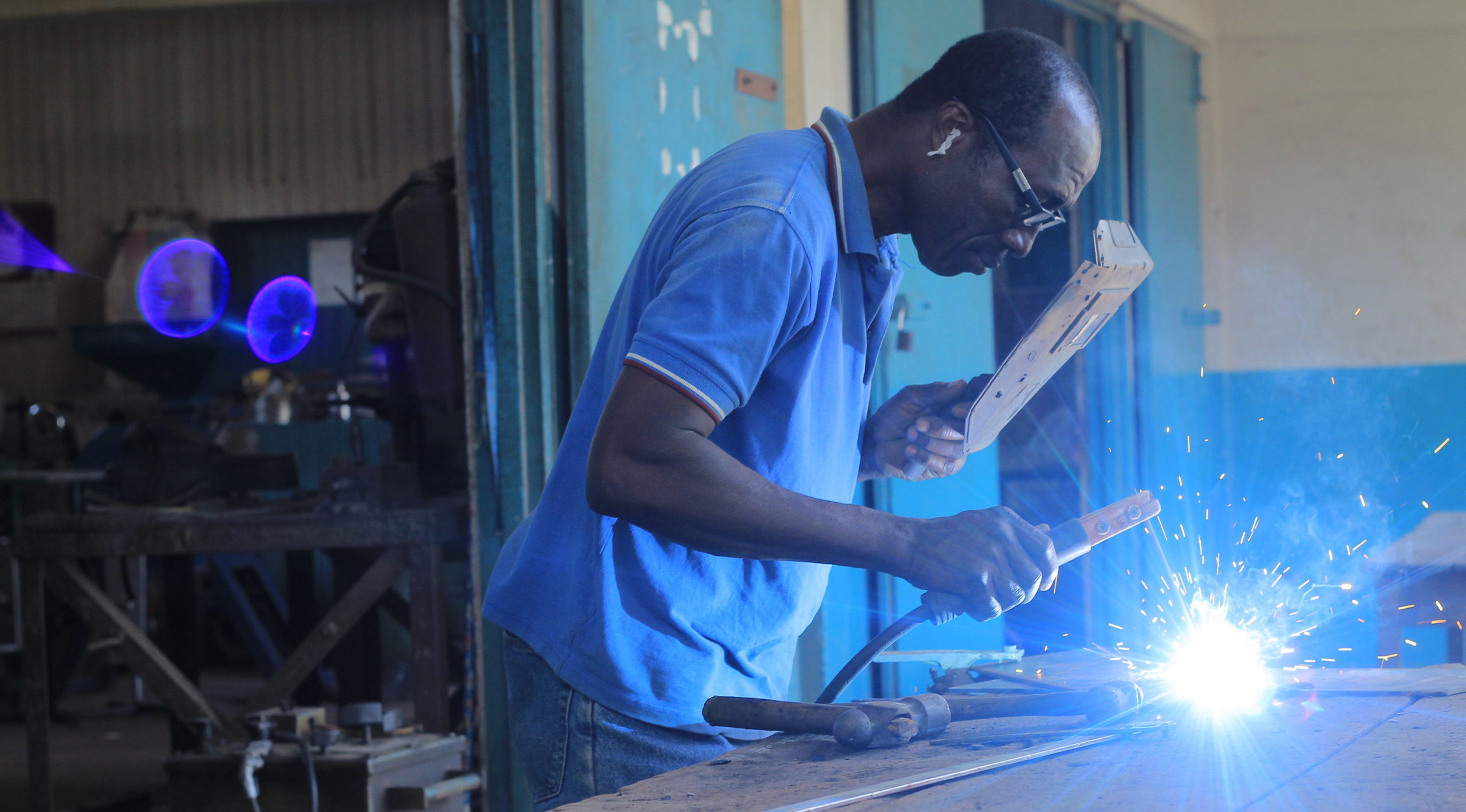By Yaw Adu-Gyamfi
In my previous blog on skills development and innovation at Ghana’s Suame Magazine, I showed how the high level of collaboration and sharing of knowledge and skills within the cluster is contributing to innovation. Further, I provided some preliminary findings on the inability of these artisans’ to keep pace with the changing technology landscape. I also found that few artisans expressed interest in joining or maintaining a membership with local trade associations due to these associations’ inability to implement their key mandate of skills development and facilitation of business for members and firms.
In this second blog, I will now delve deeper into the support systems and governance mechanisms that have been jointly put in place by artisans, academia, and the Ghanaian government over the years, including what has worked and could be put in place to support artisans’ innovations. Such support mechanisms have been shown to increase the possibility of scaling up by local businesses including developing innovative products and services, both within the industrial cluster and beyond.
The History of Support for Suame Innovations
The Suame Magazine Industrial Development Organization (SMIDO) is an umbrella organization of all the artisan associations in the cluster. SMIDO, which was set up and led by artisans, serves as the link between artisans and the private sector, academia, and government in order to address challenges such as new technologies, better infrastructure, and other gaps in capacity. Support for Suame Magazine has been conducted jointly through three pillars: 1) the artisans and their micro-, small-, and medium-sized enterprises (MSMEs); 2) academia through Kwame Nkrumah University of Science and Technology’s Intermediary Technology Transfer Unit (ITTU); and 3) with the government’s Kumasi Vocational Training Institute (KVTI) and other specific interventions in policies and infrastructure. Despite the long history of these interventions, however, Suame innovations are stagnating due to the inability of artisans to keep pace with increasing technology and limited external support.
At its peak, between 1980 and 1990, the ITTU – set up by Kwame Nkrumah University of Science and Technology – increased the technical abilities of artisans in Suame Magazine. The ITTU established an iron foundry, a machine shop, and a welding and steel fabrication shop to introduce and demonstrate more sophisticated engineering techniques to local enterprises. Artisans in Suame Magazine were able to get free advice and practical training through the ITTU. Over time, the ITTU sold some of its equipment to artisans that were seen as having the potential of using this equipment to run successful businesses. By the mid-1980s, the capstan lathe, milling and gear hobbying machines, and iron melting furnaces had been transferred to artisans in Suame Magazine by the ITTU. These three technologies produced bolts, nuts, gears and chain sprocket wheels, and the use of the iron melting furnaces, which led to the recycling of cast iron scraps. In addition, as stated in John Powell’s “The Survival of the Fitter”, the ITTU widened the range of products produced in Suame Magazine. ITTU demonstrated the manufacturing processes for items such as palm oil extractors, soap boiling tanks, and agricultural tools. Following these demonstrations, artisans began to produce a variety of products such as corn mills, cassava graters, palm kernel crackers, carpenters’ saw benches, wood-turning lathes, and more. These innovations were locally relevant and helped to stimulate other sectors in the Ghanaian economy.
Since then, however, resourcing and re-tooling to adapt to changing technologies in the automobile and manufacturing sectors has become a challenge for ITTU-led interventions. In response, SMIDO was formed in 2006. Since then, SMIDO has focused on two main goals: increasing micro, small, and medium scale enterprises (MSMEs) market access through its Engineering Contracts Programme, and capacity building for local artisans through the soon to be established Suame Magazine Automatics Technical Institute.

By 2010, SMIDO’s Engineering Contracts Programme had connected about 200 MSMEs to large private sector companies by securing contracts for engineering fabrication and other work that would not otherwise be available to businesses in Suame Magazine. SMIDO acted as managing contractor for this work, establishing specifications, preparing designs and work schedules, procuring the various elements for the job, coordinating activities, and ensuring the quality of the work. Not only did this bring work to Suame Magazine artisans, but it also allowed them to learn by doing. Artisans were introduced to the requirements and expectations of clients from formal sector companies, especially in mining, and were able to learn while being paid for their work. Unfortunately, SMIDO, who was implementing the program, faced governance challenges leading to a standstill.
Addressing the challenge of innovation stagnation
The Suame Magazine industrial cluster is currently facing a period of decline despite the fact that the majority of artisans express optimism for the future. They believe that with improvement in products, innovations, and a steady demand in the market, external interventions could help the cluster to compete in the local market. Such external interventions include the retooling of ITTU and resourcing of the NVTI centre in Kumasi could help to provide continuous training and innovation support, improvement in quality management and production control, infrastructure, and opportunities for learning by doing. Subsequently, artisans in the cluster will be better able to scale-up their innovations and dominate a substantial part of the Ghanaian economy, if not the West African market.
In addition, the setting up of an industrial makerspace could help to enhance collaboration, open sharing, and access to digital tools and technologies within the cluster, thereby serving as a further enabler of innovation. While my own research has found that there is still a wide gap between Suame Magazine and the global maker movement, there are enormous possibilities for a connection and increased collaboration.
The examples above of external and internal interventions aimed at boosting the technical capabilities of artisans and creating an avenue for innovations to thrive are the very systems that are needed to strengthen and halt the stagnation of innovation in Suame Magazine. The ITTU needs retooling with modern, appropriate manufacturing tools for learning, prototyping, and commercialization. To facilitate continuous learning, the National Vocational Training Institute needs to be resourced with adequate modern technological devices and equipment for effective teaching and learning purposes in support of artisans and their firms. Lastly, SMIDO’s governance and leadership challenges needs to be addressed to ensure that the organization continues its innovative programmes. A strong and vibrant development organization like SMIDO is able to work with relevant stakeholders to facilitate an enabling environment for innovation to thrive, such as lobbying the government on land tenure issues, resolving inconsistent policies, and supporting public-private investments.
Suame Magazine has experienced several shifts in fortune due to the changing policy landscape. What my current research is highlighting is that most artisans feel they can not expand their businesses because there are limited means by which to acquire new knowledge, new tools, new equipment, and new skills.
Ultimately, the motivation for improving collaboration must come from the Suame MSMEs, who clearly know what they need to facilitate relevant partnerships. Other stakeholders such as the government and academia can facilitate the process and support it with policies and skills development. If any new technologies are to help Suame Magazine to thrive, increased collaboration with end-users, the artisans, is required.










